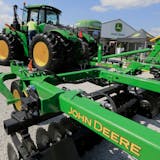Fire deaths rose in Minnesota last year, in part because of a November fire that killed five people at a public housing high-rise in the Cedar-Riverside neighborhood of Minneapolis.
The Minnesota State Fire Marshal Division tallied 42 fire deaths in 2019, up from 37 the year before. Two-thirds of the victims were age 50 or older.
The number of fire deaths has fluctuated greatly in recent years: 2018 was one of the least deadly of the decade, while 2017 logged a high of 68.
The statistics for 2019 are preliminary and could rise once hospitals report their information to the Minnesota Department of Health, said Jen Longaecker, a spokeswoman for the state Department of Public Safety.
The preliminary total includes five people who died of smoke inhalation after a fire at the Cedar High Apartments in Minneapolis just before Thanksgiving. City fire investigators were not able to pinpoint the cause of that blaze but said an electrical short circuit, a baseboard heater and smoking or "use of smoking materials" contributed to it.
The victims in that fire were Amatalah Adam, 78; Maryan Mohamud, 69; Nadifa Mohamud, 67; Jerome Stuart, 59, and Tyler Scott Baron, 32.
Investigators in the other fires determined that at least seven of the deaths were a result of smoking-related causes.
"That number could rise as investigators continue determining fire causes," the fire marshal's office said in a news release.



